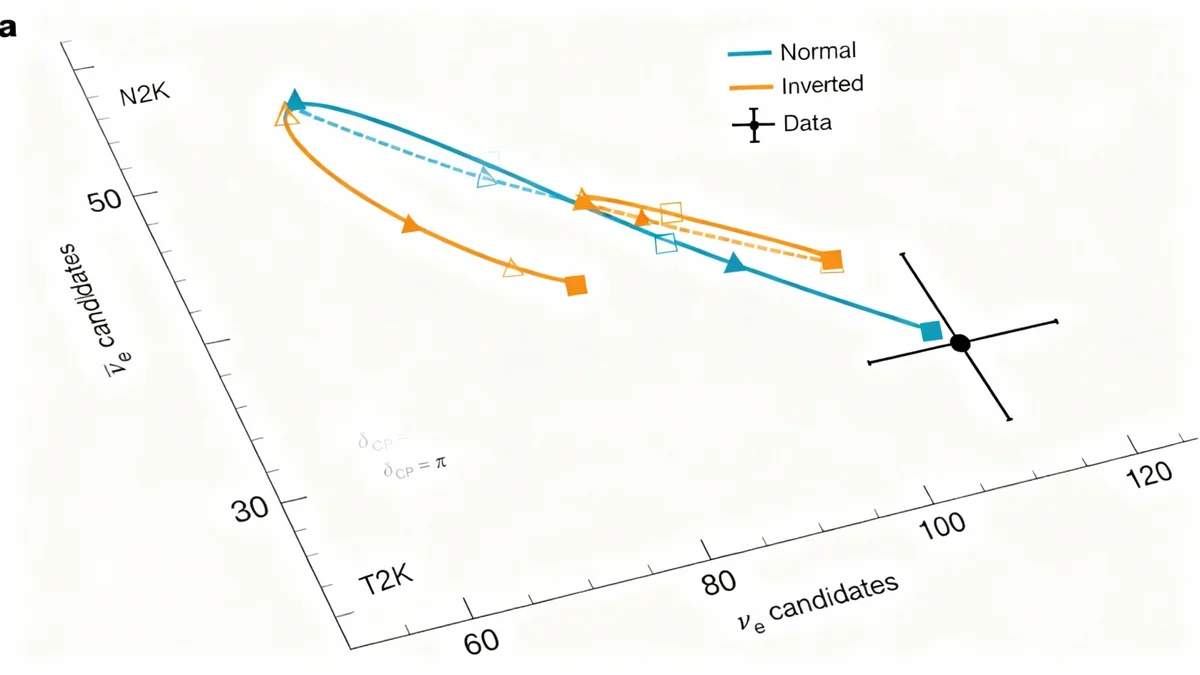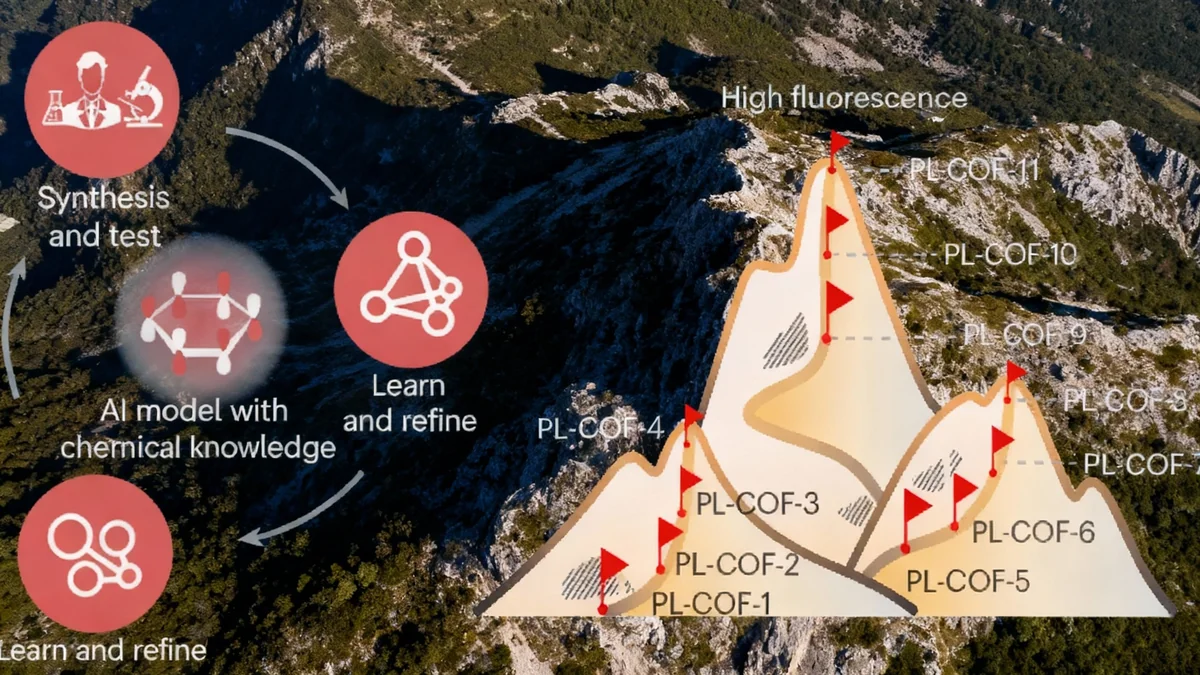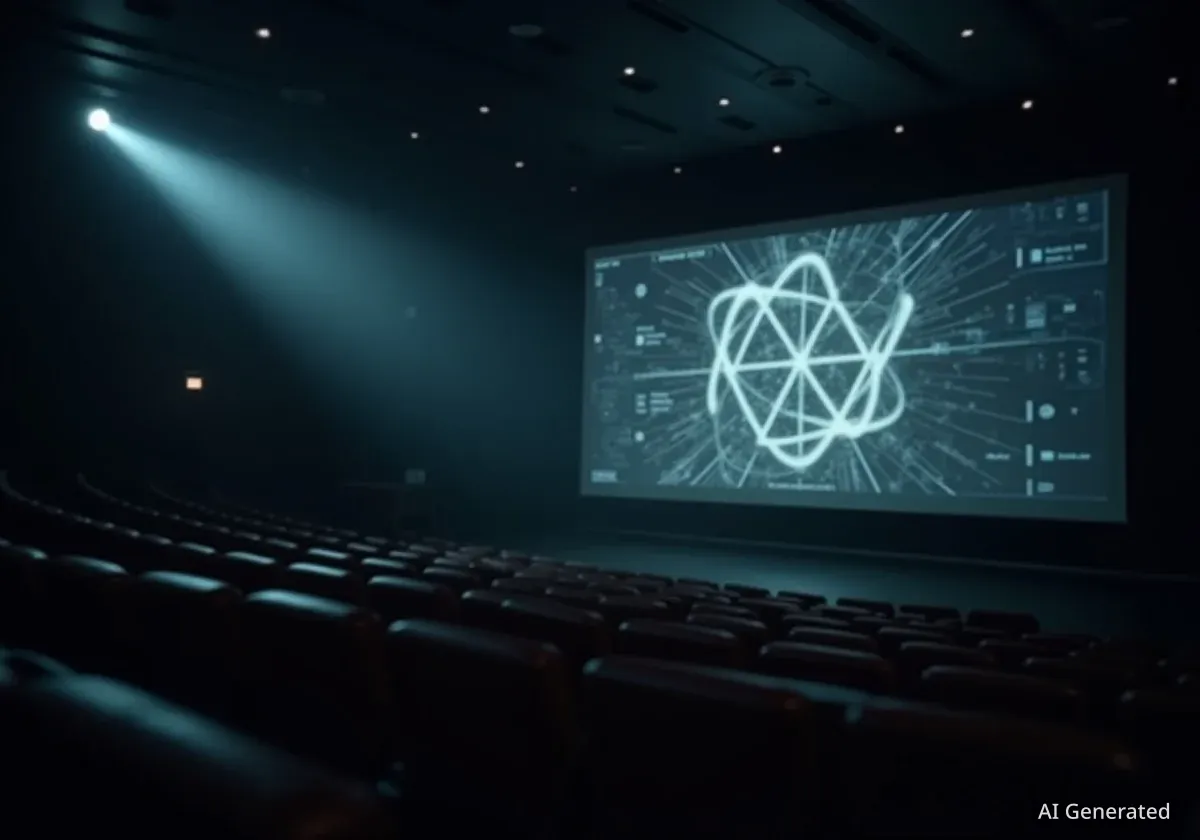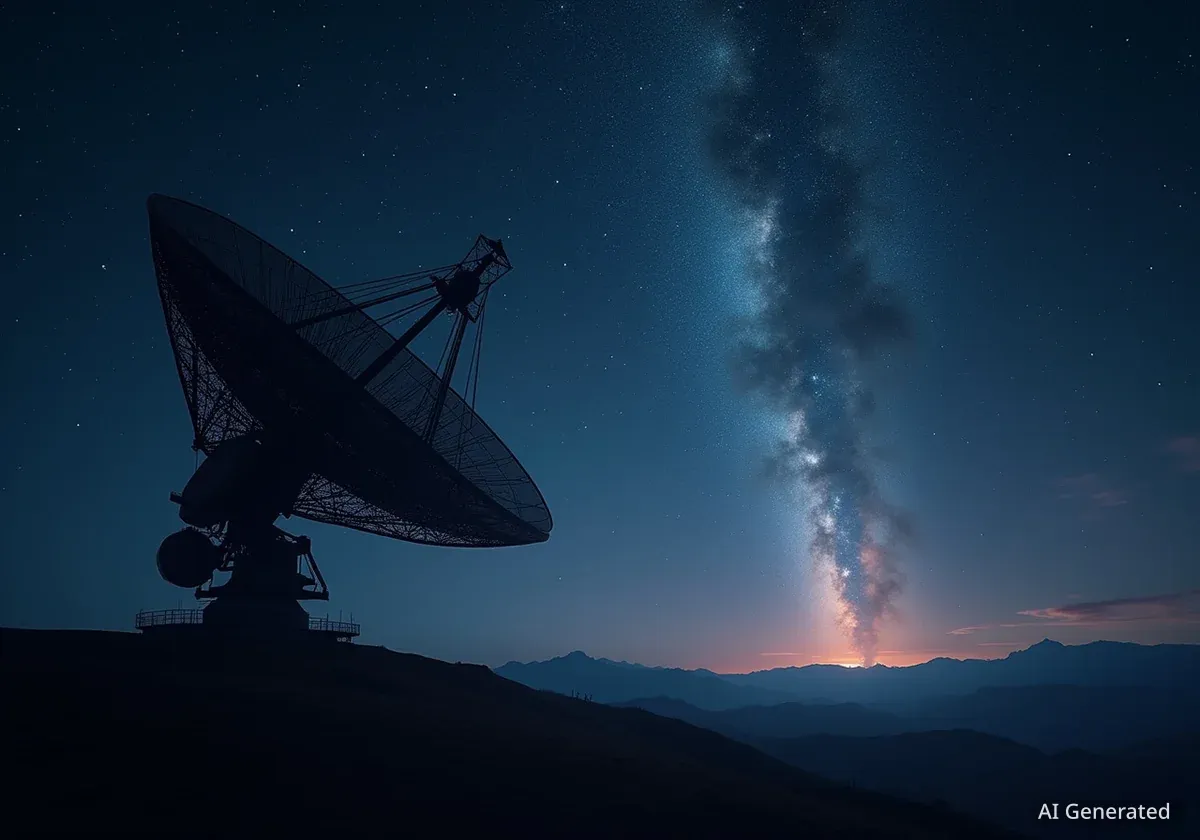In a landmark collaborative effort, two international physics experiments have produced results that could bring science closer to understanding one of the universe's greatest mysteries: why matter exists. The joint analysis provides the strongest evidence yet that neutrinos, elusive subatomic particles, may not behave the same as their antimatter counterparts, a property known as CP violation.
The findings stem from a combined analysis of data from the T2K experiment in Japan and the NOvA experiment in the United States. While the results do not definitively prove CP violation, they significantly narrow down the possibilities and suggest that if a specific model of neutrino mass is correct, this fundamental asymmetry is present in the lepton sector.
Key Takeaways
- For the first time, the T2K (Japan) and NOvA (USA) experiments have combined their neutrino data for a joint analysis.
- The study provides evidence for charge-parity (CP) violation if the "inverted mass ordering" of neutrinos is true.
- CP violation could help explain why the universe is dominated by matter instead of antimatter.
- The analysis also delivered the most precise measurement to date of a key neutrino oscillation parameter, Δm²₃₂.
- The combined data shows a slight but not statistically significant preference for the inverted mass ordering.
A Tale of Two Experiments
To study neutrinos, scientists must create them in powerful particle accelerators and send them on long journeys through the Earth. Neutrinos are known to oscillate, or change their "flavor" (type), as they travel. By measuring how many neutrinos of a certain flavor arrive at a distant detector compared to how many were sent, physicists can deduce their fundamental properties.
The two leading projects in this field are T2K and NOvA. Though they share the same goal, their designs are different, making them powerful partners.
The T2K and NOvA Facilities
The T2K (Tokai to Kamioka) experiment in Japan generates a beam of neutrinos at the J-PARC facility in Tokai and directs it 295 kilometers west to the massive Super-Kamiokande detector, located deep under a mountain.
Meanwhile, the NOvA (NuMI Off-axis νe Appearance) experiment in the United States creates its neutrino beam at Fermilab near Chicago, sending it 810 kilometers through the Earth's crust to a detector in northern Minnesota.
Complementary Strengths
The different distances and beam energies of the two experiments give them unique sensitivities. NOvA's longer baseline makes it better at distinguishing between the two possible neutrino mass orderings. T2K, with its lower energy beam, is particularly sensitive to the parameter that governs CP violation, known as δCP (delta-CP).
By combining their datasets, the collaborations were able to overcome ambiguities that each experiment faced alone. This joint analysis represents the first time two long-baseline accelerator neutrino experiments have integrated their results at such a fundamental level.
The Matter-Antimatter Puzzle
One of the most profound questions in physics is why we live in a universe made of matter. The Big Bang should have produced equal amounts of matter and antimatter, which would have annihilated each other, leaving behind only energy. The fact that matter survived suggests a fundamental asymmetry between the two.
Scientists believe the answer may lie in CP violation, a subtle difference in the physical laws governing matter and antimatter particles. This phenomenon has been observed in quarks but has not been sufficient to explain the cosmic matter dominance. Finding it among leptons, the family of particles that includes electrons and neutrinos, would be a major breakthrough.
"If neutrinos and their antimatter partners, antineutrinos, oscillate differently, it could be a source of the matter–antimatter asymmetry in nature, which is of great interest given the connection between CP violation and the unexplained matter dominance in the Universe."
Key Findings from the Joint Analysis
The combined data analysis has yielded several important results, refining our understanding of the neutrino sector.
Evidence for CP Violation
The most significant finding relates to the δCP phase, which ranges from -π to +π. Values of 0 and π would mean that CP symmetry is conserved—that neutrinos and antineutrinos behave identically. Any other value implies CP violation.
The result depends on another unknown property: the neutrino mass ordering. There are two possibilities:
- Normal Ordering: Two lighter neutrinos and one heavier one.
- Inverted Ordering: One lighter neutrino and two heavier ones.
The joint analysis found that if the inverted ordering is correct, then the CP-conserving values of 0 and π are excluded with 99.73% confidence (3σ). This provides strong evidence for CP violation in neutrinos under that assumption. However, if the normal ordering is correct, the data is less conclusive and still allows for CP conservation.
Mass Ordering and Precision Measurements
While the analysis did not resolve the mass ordering question, it did produce a surprising result. Individually, both T2K and NOvA data showed a slight preference for the normal ordering. However, when combined, the joint data slightly favors the inverted ordering, although the preference is not statistically significant.
Most Precise Measurement Yet
The collaboration achieved the world's most precise measurement of the mass-squared splitting, |Δm²₃₂|. This parameter governs the primary frequency of neutrino oscillations. The new values are 2.43 × 10⁻³ eV² for normal ordering and -2.48 × 10⁻³ eV² for inverted ordering, with an uncertainty of less than 2%.
This increased precision is crucial for future experiments and for testing the standard three-flavor model of neutrinos. It helps constrain theoretical models and provides a sharper picture of the fundamental parameters of the universe.
What Comes Next?
This joint analysis maximizes the scientific output from the world's current leading neutrino experiments. The results provide a clear direction for future research and emphasize the importance of determining the neutrino mass ordering.
Future experiments, including the next-generation Deep Underground Neutrino Experiment (DUNE) in the U.S. and the Hyper-Kamiokande experiment in Japan, are designed to definitively answer the questions of mass ordering and CP violation. The groundwork laid by T2K and NOvA is essential for interpreting the data these future facilities will collect.
For now, the tantalizing hint of CP violation provides a powerful motivation. Physicists may be one step closer to understanding not just the nature of the neutrino, but the very reason for our own existence.





